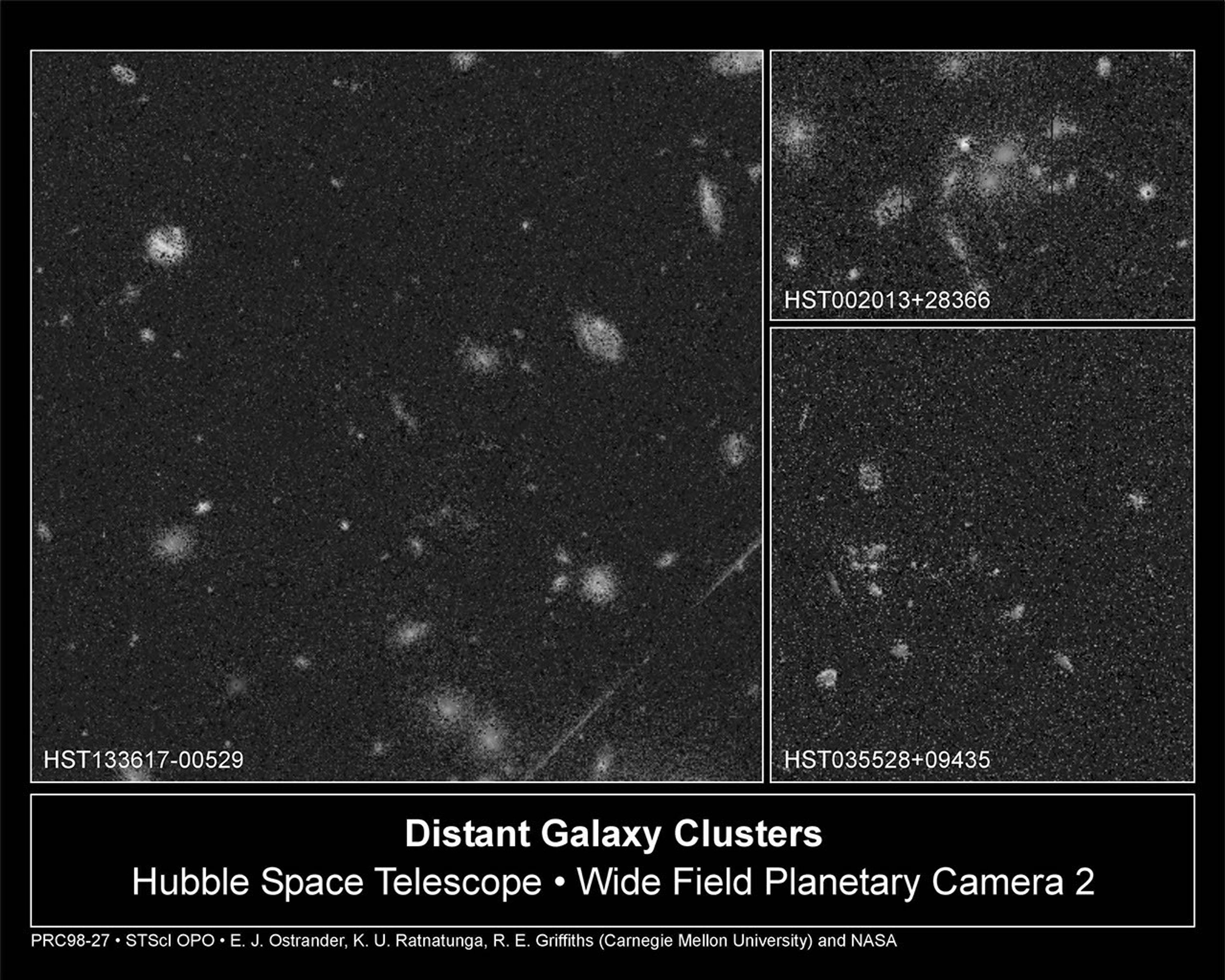1 min read
Far-Flung Galaxy Clusters in the Hubble Medium Deep Sky Survey

A selection of NASA Hubble Space Telescope snapshots of huge galaxy clusters that lie far away and far back in time. These are selected from a catalog of 92 new clusters uncovered during a six-year Hubble observing program known as the Medium Deep Survey.
If the distances and masses of the clusters are confirmed by ground based telescopes, the survey may hold clues to how galaxies quickly formed into massive large-scale structures after the big bang, and what that may mean for the eventual fate of the expanding universe.
The images are each a combination of two exposures in yellow and deep red taken with Hubble's Wide Field and Planetary Camera 2. Each cluster's distance is inferred from the reddening of the starlight, which is due to the expansion of space. Astronomers assume these clusters all formed early in the history of the universe.
HST133617-00529 (left) This collection of spiral and elliptical galaxies lies an estimated 4 to 6 billion light-years away. It is in the constellation of Virgo not far from the 3rd magnitude star Zeta Virginis. The brighter galaxies in this cluster have red magnitudes between 20 and 22 near the limit of the Palomar Sky Survey. The bright blue galaxy (upper left) is probably a foreground galaxy, and not a cluster member. The larger of the galaxies in the cluster are probably about the size of our Milky Way Galaxy. The diagonal line at lower right is an artificial satellite trail.
HST002013+28366 (upper right) This cluster of galaxies lies in the constellation of Andromeda a few degrees from the star Alpheratz in the northeast corner of the constellation Pegasus. It is at an estimated distance of 4 billion light-years, which means the light we are seeing from the cluster is as it appeared when the universe was roughly 2/3 of its present age.
HST035528+09435 (lower right) At an estimated distance of about 7 to 10 billion light-years (z=1), this is one of the farthest clusters in the Hubble sample. The cluster lies in the constellation of Taurus.
- Object NameObject NameA name or catalog number that astronomers use to identify an astronomical object.HST133617-00529, HST002013+28366, HST035528+09435
- Release DateAugust 27, 1998
- Science ReleaseFar-Flung Galaxy Clusters May Reveal Fate of Universe
- CreditK. Ratnatunga, R. Griffiths (Carnegie Mellon University), and NASA
Share
Details
Claire Andreoli
NASA’s Goddard Space Flight Center
Greenbelt, Maryland
claire.andreoli@nasa.gov































